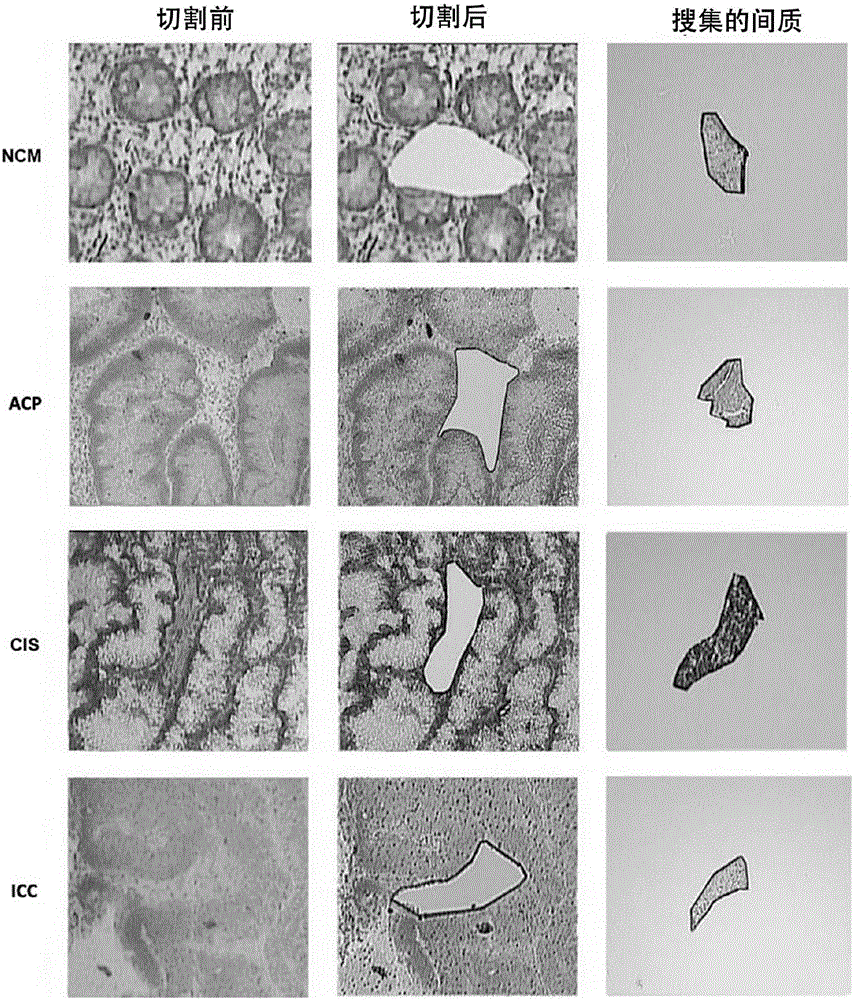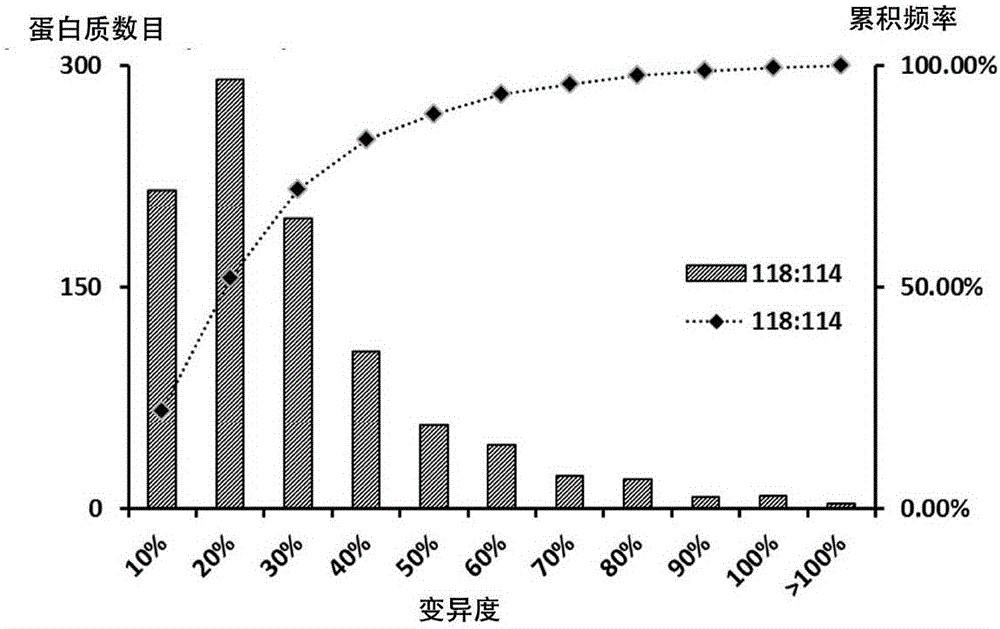Group of colon cancer metastasis related tumor stroma markers and application
A technology of tumor stroma and markers, applied in the biological field, can solve the problems of insufficient specificity of diagnostic molecules and inaccurate early diagnosis
- Summary
- Abstract
- Description
- Claims
- Application Information
AI Technical Summary
Problems solved by technology
Method used
Image
Examples
Embodiment 1
[0020] Analysis of Differentially Expressed Proteins in Carcinogenesis of Colon Cancer
[0021] Collect the pathological tissues of the four typical stages (normal, adenomatous polyps, carcinoma in situ, and invasive carcinoma) in the process of colon cancer carcinogenesis. After the section was stained, it was confirmed by a pathologist. After the tissue was frozen sectioned, it was pasted on a special membrane for microdissection, fixed in 75% ethanol solution for 30 seconds, and stained with 0.5% methyl green. After staining, the sections are air-dried for later use. After staining, the sections were subjected to laser microdissection. Under the microscope, select areas with a consistency greater than 95% for cutting, and collect cutting components.
[0022] The result is figure 1 As shown, by microdissection, the interstitial tissue surrounding colon epithelial cells is effectively separated and collected. This shows that the subsequent identified proteins all come from int...
Embodiment 2
[0024] Extract the collected interstitial components at different stages: dissolve the interstitial components in an appropriate amount of lysis buffer (7MUrea, 2M Thiourea, 65mM DTT, 0.1mM PMSF) and lyse at 4℃ for 1 hour, then centrifuge at 12000rpm for 30 minutes Collect the supernatant. A 2D quantitative kit was used for protein concentration determination. Different individual samples at the same stage are mixed in equal amounts to form four-stage mixed protein samples for subsequent labeling experiments.
[0025] The samples were labeled according to the standard procedure of the iTRAQ kit: 4 mixed protein samples, each of which was 100 ug, was reduced and alkylated and then digested overnight at 37°C. The peptides after enzymolysis were labeled with 8-channel (8plex) iTRAQ reagent (labeling reagent 114,118 labeled NCM interstitial; reagent 113,117 labeled ACP interstitial; reagent 115,119 labeled CIS interstitial; reagent 116,121 labeled ICC interstitial). After labeling,...
Embodiment 3
[0030] Tenascin-C expression in different stages of tissues (see Table 2)
[0031] Collected 50 cases of NCM, 50 cases of ACP, 30 cases of CIS and 63 cases of ICC paraffin-embedded tissue sections. After the sections were deparaffinized, they were incubated with Tenascin-C antibody (1:1000) overnight, and after reaction with peroxidase-labeled secondary antibodies, DAB developed color. The sections were counterstained with hematoxylin. Score the positive density and staining intensity of each slice under the microscope. The scoring range is 0-6 seven levels: 0, 1, 2 are no expression; 3, 4 are low expression, 5, 6 are high expression. The staining result is like Figure 4 Shown.
[0032] The results are shown in Table 2: 74% of the normal mesenchyme has no expression, 22% has low expression, and only 2% has high expression. However, only 16% of infiltrating tumor stroma has low expression and 45% high expression. Statistics show that the difference is significant. It shows tha...
PUM
 Login to View More
Login to View More Abstract
Description
Claims
Application Information
 Login to View More
Login to View More - R&D
- Intellectual Property
- Life Sciences
- Materials
- Tech Scout
- Unparalleled Data Quality
- Higher Quality Content
- 60% Fewer Hallucinations
Browse by: Latest US Patents, China's latest patents, Technical Efficacy Thesaurus, Application Domain, Technology Topic, Popular Technical Reports.
© 2025 PatSnap. All rights reserved.Legal|Privacy policy|Modern Slavery Act Transparency Statement|Sitemap|About US| Contact US: help@patsnap.com



